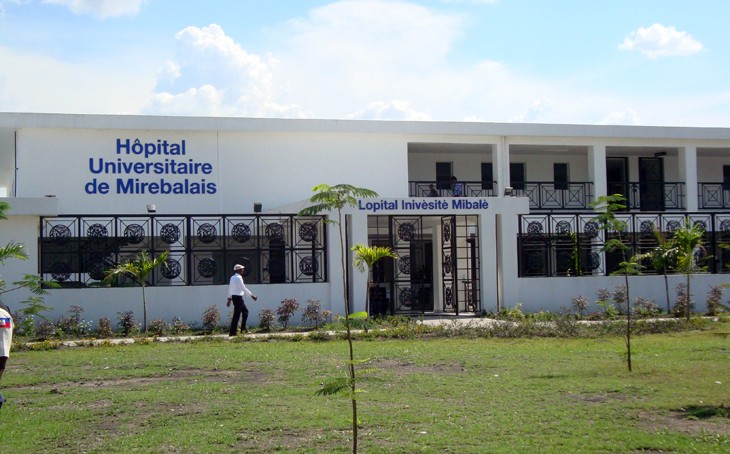
During my recent visit to Haiti, I had the privilege of visiting the Mirebalais University Hospital in the Central Plateau region along with a team of USAID officials and representatives from Partners in Health. The hospital is located about two hours north of Port Au Prince, near the origin of the cholera outbreak in 2010, Rivière Latèm.
The Mirebalais University Hospital is a 205,000 square foot, 300-bed facility, which uses advanced equipment in its emergency and neonatal care units. The facility provides primary health care services to 185,000 individuals in Mirebalais and two adjoining communities.
Patients in a wider area receive secondary and tertiary care provided by 13 affiliated hospitals and health centers run by the Government of Haiti’s Ministry of Public Health and Population (MSPP) and Zanmi Lasante (Creole for Partners In Health). The Hospital is staffed by 701 employees ranging from grounds-keepers to medical staff and administrators and includes 56 doctors and 280 nurses. Three hundred patients occupying beds and over 500 ambulatory patients are seen each day.
It is also a teaching hospital, with two large dormitories for students and medical staff located on the hospital grounds. The Hospital is one of two medical schools in Haiti, and the only teaching hospital.
Partners in Health, under the leadership of Dr. Paul Farmer, was the lead institution responsible for securing funds, designing, staffing, constructing, and managing the $25 million hospital project, which began operating in March 2013. Four other post-earthquake hospitals are planned.
While MSPP and Zanmi Lasante currently operate the hospital, the plan is to have the hospital run entirely by MSPP within ten years.
I was very impressed by what I observed and learned. For example, a consistent and highly reliable (and affordable) supply of electricity is key to operating such a large general hospital. The hospital achieves this by effectively integrating solar power, using a diesel generator on site (2800 KW), and linking into an electricity grid through a system managed by two experienced facility managers.
For their solar energy, they have 1,800 solar panels with a full capacity of 475 KW. They use 375 KW at peak times and release 100 KW to the grid. Presently, they release this excess energy to the national grid and do not receive payment for it, but hope to do so over time.
Grid energy is expensive: 35 cents/kwh compared to about five cents in the United States. Water, of course, is key. The hospital has its own deep bore hole wells, providing approximately 30,000 gallons of water a day. It treats all wastewater on site, using an innovative rotating biological contractor wastewater treatment system. The system biologically treats the wastewater through anaerobic digestion and kills pathogenic organisms; the water is subsequently treated with chlorine for further disinfection. All in all, the system treats 50,000 gallons of wastewater a day to U.S. Environmental Protection Agency standards and can be expanded to treat 75,000 gallons a day, if needed. Ultimately, the treated water is released to irrigate farms bordering the hospital grounds.
When one assesses a facility, there are certain activities and design features that say a great deal about its overall operation and culture – that convey, in effect, this is a beautiful, strong, well-run hospital, you will be well cared for here. Related to that message, I was impressed by such activities and design as the overall cleanliness and orderliness of the hospital; the respect that employees showed those awaiting care; the long, large wooden pews, with a red cross carved into the side of each pew, that were donated by a church for sitting in the waiting area; the open courtyard at the center of the hospital with its koi reflection pond; large, circular metal medallion-like sculptures of fish and birds; large corridors throughout the hospital; well-spaced beds in the maternity room, and the effective use of natural lighting and ventilation.
And finally, I was encouraged by the hope this hospital gives Haiti. This is a great work built in a remote area, serving a population well removed from medical care in Port-au-Prince. It demonstrates how first-rate medical care can be provided to large numbers of poor people and gives hope that other such facilities, in health care and other services, can be built and operated successfully – and hopefully effectively transitioned to the Government of Haiti.
– Chris Holmes, Global Water Coordinator







Comment
Make a general inquiry or suggest an improvement.